Black Cat Tattoo: Ideas, Meaning and Design
- Leonardo Pereira

- Jul 12
- 21 min read
Updated: Nov 10
Black cat tattoos have emerged as one of the most captivating and symbolically rich forms of body art, representing a fascinating blend of mystery, independence, and spiritual power that resonates deeply with those drawn to feline grace and the profound symbolism these enigmatic creatures embody across cultures and throughout history.
These striking designs offer extraordinary opportunities for personal expression while challenging superstitions and celebrating the true nature of these magnificent animals.
What makes black cat tattoos particularly compelling is their unique ability to embody contradictory meanings while maintaining universal appeal across diverse cultural contexts.
Table of Contents
From ancient Egyptian reverence to modern spiritual practices, black cats represent everything from divine protection and good fortune to independence and mystical wisdom, creating rich opportunities for deeply personal artistic expression that reflects individual values and spiritual beliefs.
The artistic possibilities within black cat tattoos are virtually limitless, ranging from hyper-realistic portraits that capture every whisker and the mesmerizing depth of feline eyes to stylized interpretations that emphasize symbolic meaning and mystical associations.
Whether you prefer gothic aesthetics that celebrate mystery and shadow, minimalist designs that capture feline essence through clean lines, or comprehensive scenes that tell complete stories about independence and spiritual connection, black cat tattoos provide the perfect foundation for creating meaningful and visually stunning body art.
The Mystical Appeal of Black Cat Tattoos

Black cat tattoos have captured the imagination of tattoo enthusiasts worldwide because they represent a perfect fusion of natural beauty, spiritual symbolism, and the courage to embrace what others might fear or misunderstand, making them powerful statements of independence and authentic self-expression.
Symbolic complexity and depth characterizes black cat tattoos that operate on multiple levels of meaning, representing everything from divine protection and spiritual guidance to personal independence and the wisdom that comes from walking one's own path despite social pressure or conventional expectations.
Cultural reclamation and empowerment emerges through black cat tattoos that deliberately challenge negative superstitions while celebrating the true nature of these magnificent creatures. These designs become statements of defiance against ignorance while honoring the genuine qualities that make black cats so special.
Mystical and spiritual significance connects black cat tattoos to various spiritual traditions where these animals serve as guides, protectors, and symbols of divine feminine energy, lunar wisdom, and the ability to navigate between physical and spiritual realms with grace and intuition.
Independence and self-reliance themes resonate through black cat tattoos that celebrate the solitary strength, self-sufficiency, and confident autonomy that characterizes both cats and individuals who choose to honor these qualities through permanent body art.
Aesthetic versatility and beauty allows black cat tattoos to be adapted to virtually any artistic style while maintaining their essential mysterious character and symbolic significance, from realistic portraits to abstract interpretations that capture feline essence.
Feminine power and goddess energy particularly characterizes black cat tattoos that connect to traditions honoring the divine feminine, lunar cycles, and the intuitive wisdom that operates beyond rational understanding and conventional thinking.
Protection and guardianship meanings appear in black cat tattoos that represent spiritual protection, psychic defense, and the ability to ward off negative energies while maintaining personal boundaries and energetic integrity.
Transformation and shadow work connects black cat tattoos to psychological and spiritual practices that involve integrating hidden aspects of personality and embracing the wisdom found in darkness, mystery, and the unknown aspects of existence.
Popular Black Cat Designs and Styles

Realistic black cat portraits showcase incredible artistic skill through detailed representations that capture the mesmerizing beauty and mysterious presence of these creatures. These technical masterpieces emphasize the natural elegance of black cats while demonstrating the artist's ability to create lifelike representations.
Gothic and dark art interpretations transform black cat imagery through gothic aesthetics that emphasize mystery, shadow, and supernatural elements. These designs often incorporate additional gothic elements like roses, moons, or architectural features that enhance the mysterious atmosphere.
Silhouette and minimalist designs use the power of negative space and clean lines to create striking black cat imagery that emphasizes form and symbolic meaning over detailed representation. These elegant approaches appeal to contemporary aesthetic preferences.
Witch's familiar representations honor the historical and spiritual connection between black cats and witchcraft traditions, creating designs that celebrate magical practices, lunar energy, and the divine feminine wisdom associated with both cats and witches.
Egyptian goddess inspired artwork draws from ancient Egyptian reverence for cats, particularly the goddess Bastet, creating designs that honor the sacred relationship between humans and felines while celebrating divine protection and spiritual guidance.
Japanese lucky cat adaptations transform traditional maneki-neko imagery into black cat representations that celebrate good fortune, prosperity, and the positive associations these animals hold in Asian cultures rather than Western superstitions.
Watercolor and artistic effects apply contemporary painting techniques to black cat imagery, creating flowing, colorful interpretations that emphasize artistic expression while maintaining the essential mysterious character of these beloved animals.
Memorial and tribute variations incorporate black cat imagery into designs that honor deceased beloved pets, creating meaningful tributes that celebrate the special bonds between humans and their feline companions while keeping their memory alive.
For those interested in expanding their animal spirit tattoo collection, black cat designs work beautifully with other mystical creatures. Consider how your black cat tattoo might complement
black rabbit tattoo designs for those seeking to create comprehensive collections that explore different aspects of shadow wisdom and spiritual guidance.
Black Cat Symbolism and Meanings

Black cat tattoos carry profound symbolic meanings that reflect diverse cultural traditions while challenging negative superstitions and celebrating the true nature of these magnificent creatures as symbols of power, wisdom, and spiritual protection.
Divine protection and spiritual guidance represent fundamental themes in black cat tattoos, as these creatures have been revered across many cultures as sacred animals capable of providing supernatural protection and serving as bridges between physical and spiritual realms.
Independence and self-reliance meanings emerge through black cat tattoos that celebrate the autonomous nature of cats and their ability to thrive through self-sufficiency, making them perfect symbols for individuals who value personal freedom and authentic self-expression.
Feminine power and goddess energy connect black cat tattoos to traditions that honor the divine feminine, lunar cycles, and the intuitive wisdom that operates beyond rational understanding, making them meaningful choices for those who embrace feminine spiritual power.
Good fortune and prosperity themes appear in black cat tattoos that draw from Asian cultural traditions where black cats are considered harbingers of good luck, wealth, and positive energy rather than the negative associations found in some Western superstitions.
Mystery and hidden wisdom symbolism emerges through black cat tattoos that represent the ability to see beyond surface appearances, access hidden knowledge, and navigate the mysterious aspects of existence with grace and intuitive understanding.
Transformation and rebirth meanings connect black cat tattoos to the feline ability to land on their feet and survive challenging circumstances, representing resilience, adaptability, and the capacity for personal transformation and spiritual growth.
Psychic abilities and intuition themes resonate through black cat tattoos that honor the heightened sensitivity and intuitive capabilities that many people associate with both cats and individuals who feel particularly connected to feline energy.
Rebellion against superstition symbolism appears in black cat tattoos that deliberately challenge negative stereotypes while celebrating the true nature of these animals as loving, intelligent, and spiritually significant creatures deserving of respect and appreciation.
Black Cat Tattoo Placement Ideas

Choosing the right placement for black cat tattoos significantly impacts both the visual effect and personal significance of these mystical designs. Each body area offers unique advantages for different types of feline artwork and symbolic meaning.
Forearm placements provide excellent visibility for black cat tattoos while offering comfortable tattooing experiences and easy concealment when necessary. These areas work beautifully for detailed cat portraits, silhouette designs, or mystical compositions that benefit from regular contemplation.
Upper arm and shoulder areas offer larger canvas space for comprehensive black cat compositions while maintaining comfortable pain levels and excellent healing characteristics. These placements work well for gothic scenes, spiritual imagery, or artistic interpretations.
Back placements provide unlimited possibilities for large-scale black cat tattoos that can incorporate extensive backgrounds, mystical scenes, or elaborate compositions that tell complete stories about independence, spiritual connection, and personal transformation.
Thigh placements create excellent canvas space for detailed black cat work while maintaining easier concealment options. The natural curves can enhance flowing compositions that follow body contours while maintaining the mysterious atmosphere these designs require.
Ankle and lower leg placements work well for smaller black cat designs that can be displayed or concealed depending on clothing choices, creating opportunities for personal spiritual expression that remains largely private yet meaningful.
Behind the ear and neck areas provide subtle, personal placement for smaller black cat tattoos that remain largely private while offering opportunities for meaningful personal symbolism and spiritual connection.
Many collectors choose to create comprehensive mystical collections by combining their black cat tattoos with other spiritual designs. Tiger tattoo designs offer inspiration for those interested in exploring different aspects of feline power and spiritual guidance through comprehensive animal spirit collections.
Ribcage and side placements offer intimate, personal locations for black cat tattoos while providing excellent space for elongated designs that might include moon phases, gothic elements, or spiritual symbols that enhance the overall mystical composition.
Multiple placement strategies enable comprehensive black cat collections that can tell complete stories about spiritual development, independence, or personal transformation across different body areas while maintaining thematic unity and symbolic coherence.
Black Cat Design Gallery
Realistic Black Cat Portraits
Detailed Face Studies showcase the mesmerizing beauty and mysterious presence of black cats through realistic portraits that capture every whisker, the depth of golden or green eyes, and the lustrous quality of black fur with incredible artistic precision.
Full Body Poses feature complete cat figures in various positions that emphasize their natural grace and mysterious presence while showcasing the artist's ability to capture anatomical accuracy and the fluid movement that defines feline elegance.
Close-up Eye Focus concentrates on the hypnotic quality of cat eyes, creating intimate portraits that seem to look directly into the viewer's soul with wisdom and mysterious understanding that transcends ordinary perception.
Sleeping Cat Serenity depicts black cats in peaceful rest, emphasizing the tranquil wisdom and inner strength that comes with confidence and self-assurance while celebrating the meditative quality of feline presence.
Alert and Watchful Poses show black cats in attentive positions that capture their role as guardians and protectors while emphasizing their natural vigilance and ability to perceive things beyond ordinary human awareness.
Textural Detail Mastery emphasizes the incredible softness and depth of black cat fur through detailed artistic techniques that create tactile qualities and demonstrate exceptional skill in realistic animal portraiture.
Gothic and Dark Art Interpretations
Victorian Gothic Cats incorporate historical gothic aesthetics through ornate frames, vintage elements, and dark romantic imagery that places black cats within sophisticated gothic artistic traditions and mysterious atmospheric settings.
Skull and Mortality Themes combine black cat imagery with memento mori elements that explore themes of life, death, and transformation while maintaining respect for both gothic artistic traditions and feline spiritual symbolism.
Dark Rose Combinations pair black cats with gothic roses, thorns, and floral elements that represent the beauty found in darkness and the complex relationship between life and death, beauty and mystery.
Cathedral and Architecture settings place black cats within gothic architectural contexts that emphasize their role as spiritual guardians and supernatural messengers within sacred and mysterious spaces.
Candle and Flame Elements incorporate mystical lighting through candles, torches, or supernatural flames that create atmospheric effects while emphasizing the spiritual and magical associations of black cat imagery.
Gothic Typography Integration combines black cat imagery with gothic lettering, meaningful phrases, or spiritual texts that enhance the overall mysterious atmosphere and personal significance of the design.
Silhouette and Minimalist Designs
Pure Silhouette Elegance uses stark black shapes to create powerful cat imagery that emphasizes form and symbolic meaning while demonstrating how effective minimalist approaches can be for spiritual and mystical artwork.
Geometric Cat Integration combines cat silhouettes with geometric elements that create modern interpretations of ancient spiritual symbols while maintaining the mysterious character of black cat imagery.
Negative Space Utilization uses the absence of ink to suggest cat forms and mystical elements, creating sophisticated designs that rely on viewer interpretation and artistic suggestion rather than literal representation.
Single Line Continuous Art creates black cat imagery through unbroken line work that demonstrates artistic skill while creating meditative, flowing compositions that feel both simple and sophisticated.
Minimalist Spiritual Symbols reduce black cat imagery to essential spiritual elements that maintain symbolic power while appealing to contemporary aesthetic preferences and clean design sensibilities.
Abstract Cat Essence suggests feline presence through flowing lines, curves, and artistic interpretation rather than literal anatomical representation, creating unique personal interpretations of cat energy and spirit.
Witch's Familiar and Magical Themes
Traditional Witch's Cat honors the historical connection between black cats and witchcraft through designs that celebrate magical practices, lunar energy, and the divine feminine wisdom associated with both cats and witches.
Cauldron and Potion Scenes place black cats within magical contexts that include brewing equipment, spell ingredients, or mystical tools that represent their role in magical practices and spiritual work.
Moon Phase Combinations integrate black cats with lunar imagery that represents their connection to moon energy, nocturnal wisdom, and the cyclical nature of spiritual development and magical practice.
Crystal and Gemstone Integration combines black cat imagery with spiritual crystals, gemstones, or mineral elements that represent healing, protection, and the earth-based spirituality that many find meaningful and powerful.
Tarot and Divination Themes incorporate black cats into tarot-inspired imagery that might include cards, mystical symbols, or divination tools that enhance their role as spiritual guides and supernatural messengers.
Pentagram and Protection symbols combine black cat imagery with protective spiritual symbols that represent their role as guardians and guides through spiritual development and psychic protection.
Egyptian Goddess and Ancient Themes
Bastet Goddess Representations honor the ancient Egyptian cat goddess through designs that combine black cat imagery with traditional Egyptian artistic elements, hieroglyphs, and spiritual symbols that celebrate divine feline energy.
Pyramid and Temple Settings place black cats within ancient Egyptian architectural contexts that emphasize their sacred role in Egyptian spirituality and their connection to divine protection and wisdom.
Ankh and Sacred Symbols incorporate traditional Egyptian spiritual symbols that represent life, protection, and divine power while honoring the sacred relationship between cats and Egyptian spiritual traditions.
Pharaonic Collar Details feature ornate Egyptian jewelry and decorative elements that emphasize the royal status and divine nature of cats within ancient Egyptian culture and spiritual understanding.
Hieroglyphic Integration combines black cat imagery with authentic Egyptian writing systems that add cultural depth and historical significance while honoring the ancient reverence for feline wisdom.
Mummy and Afterlife Themes respectfully incorporate elements related to Egyptian beliefs about death and rebirth while celebrating the cat's role as a guide through spiritual transformation and eternal life.
Japanese Lucky Cat Adaptations
Maneki-neko Black Variations transform traditional Japanese lucky cat imagery into black cat representations that celebrate good fortune, prosperity, and the positive associations these animals hold in Asian cultures.
Cherry Blossom Combinations pair black cats with traditional Japanese floral elements that represent beauty, impermanence, and the appreciation of life's fleeting moments while maintaining cultural authenticity and respect.
Traditional Japanese Patterns incorporate authentic artistic elements like waves, clouds, or geometric patterns that enhance the cultural context while creating visually striking compositions that honor Japanese artistic traditions.
Prosperity and Wealth Symbols include traditional elements associated with good fortune like coins, gold, or abundance imagery that emphasize the positive spiritual associations of black cats in Asian cultures.
Zen and Meditation Themes place black cats within contemplative contexts that represent inner peace, spiritual balance, and the meditative qualities that cats naturally embody through their presence and behavior.
Calligraphy Integration combines black cat imagery with traditional Japanese or Chinese writing that adds cultural depth and spiritual significance while maintaining artistic beauty and cultural respect.
Watercolor and Artistic Effects
Flowing Watercolor Cats use artistic painting techniques to create soft, flowing interpretations that emphasize the emotional and spiritual aspects of black cat symbolism through gentle color effects and artistic innovation.
Galaxy and Cosmic Effects combine black cat imagery with cosmic artistic effects that represent universal spiritual forces and the connection between earthly wisdom and celestial guidance and understanding.
Abstract Color Interpretations use non-representational techniques to suggest black cat presence through color, emotion, and artistic expression rather than literal anatomical representation, creating unique personal interpretations.
Smoke and Mist Atmospheres incorporate atmospheric elements that create mystery and supernatural atmosphere while suggesting the ethereal nature of spiritual guides and the liminal spaces they inhabit.
Mixed Media Approaches combine different artistic techniques like watercolor, line work, and geometric elements to create innovative interpretations that bridge traditional animal symbolism with contemporary artistic expression.
Impressionistic Cat Studies use loose, artistic brushwork to suggest black cat forms through mood and emotion rather than detailed accuracy, creating emotional rather than literal animal representations.
Memorial and Tribute Designs
Pet Memorial Portraits honor deceased beloved cats through realistic imagery combined with names, dates, or personal symbols that represent continuing love, cherished memories, and the special bonds shared with feline companions.
Rainbow Bridge Imagery incorporates elements related to the belief that pets wait in a beautiful place after death, representing hope for reunion and the continuing spiritual connection between humans and their animal friends.
Paw Print Integration includes actual or stylized paw prints that create physical connections to beloved pets while adding personal significance and intimate details that honor specific animals and relationships.
Angel Wing Combinations blend black cat imagery with angelic elements that represent the spiritual nature of beloved pets and their continuing presence as guardian spirits and protective forces.
Garden and Nature Settings place memorial black cats within peaceful natural environments that represent eternal rest, spiritual peace, and the return to natural harmony after earthly life.
Family Heritage Celebrations honor multiple beloved cats or family traditions of cat
ownership through comprehensive designs that celebrate the ongoing relationship between families and their feline companions.
Seasonal and Nature Combinations
Halloween and Autumn Themes embrace the traditional association between black cats and Halloween while celebrating the beauty and mystery of autumn seasons through appropriate imagery and atmospheric effects.
Winter Solstice Celebrations incorporate black cats into winter imagery that represents the longest night, the return of light, and the spiritual significance of darkness as a necessary precursor to renewal.
Forest and Woodland Settings show black cats within their natural hunting environments while emphasizing the mysterious, magical qualities of deep woods and the spiritual significance of wild places.
Moon and Night Scenes combine black cat imagery with nocturnal elements that represent their natural activity patterns and spiritual associations with lunar energy and nighttime wisdom.
Garden and Domestic Harmony place black cats within cultivated spaces that represent the balance between wild instincts and domestic companionship, natural behavior and human partnership.
Storm and Weather Elements incorporate dramatic weather, lightning, or atmospheric disturbances that represent the powerful forces of change and transformation that black cats often symbolize and navigate.
Cultural Heritage and Pride
Celtic Knotwork Integration combines black cat imagery with intricate Celtic patterns that represent eternal bonds, spiritual connections, and the integration of animal wisdom with Celtic spiritual traditions and heritage.
Native American Inspired Elements respectfully incorporate indigenous artistic styles and spiritual symbols that honor various cultural traditions while maintaining sensitivity to cultural significance and appropriate representation.
African Tribal Patterns feature bold geometric designs and cultural symbols that celebrate African artistic traditions while honoring the universal spiritual significance of cats as guides and protectors.
European Folk Art Adaptations incorporate traditional folk art elements from various European cultures that have their own relationships with cats and feline symbolism throughout history and cultural development.
Modern Cultural Fusion adapts traditional black cat imagery using contemporary artistic techniques while maintaining cultural respect and creating unique designs that bridge ancient wisdom with modern expression.
Regional Pride Representations celebrate specific geographic connections through local symbols, landmarks, or cultural elements that represent personal connection to place and community while honoring feline wisdom.
For those seeking to create comprehensive mystical tattoo collections, black cat designs complement other spiritual themes beautifully. April birth flower tattoos provide inspiration for those interested in combining animal symbolism with floral elements that represent different aspects of spiritual growth and natural wisdom.
Black Cat Aftercare and Healing
Proper aftercare for black cat tattoos requires attention to the detailed work and atmospheric effects that make these designs so mysteriously beautiful and spiritually significant. The fine details and dramatic contrasts common in black cat tattoos demand careful protection during healing.
Your artist will cover your fresh black cat tattoo with either traditional bandaging or advanced healing films like Saniderm Tattoo Bandages, which provide superior protection for detailed feline artwork. Follow their specific instructions for initial bandage removal to protect intricate details.
First week intensive care requires cleaning the tattoo 2-3 times daily with lukewarm water and gentle, fragrance-free soap, being particularly careful around areas with fine detail work or atmospheric shading effects. Pat dry with clean paper towels and apply thin layers of Aquaphor Healing Skin Ointment or Hustle Butter Deluxe.
Detail preservation focus becomes crucial for maintaining the mysterious atmosphere and fine details that make black cat tattoos so visually compelling and spiritually meaningful. The atmospheric effects and precise line work require careful protection during healing.
Nutritional support for healing can enhance your body's natural recovery processes. Proper nutrition supports collagen synthesis and tissue repair essential for maintaining detailed mystical artwork. Consider incorporating Optimum Nutrition Gold Standard 100% Whey Protein to provide amino acids necessary for optimal healing.
During the second and third weeks, your black cat tattoo will enter the peeling and itching phase. Never scratch or pick at healing tattoos, as this can damage the fine details and atmospheric effects that create the mysterious beauty these designs are known for.
Spiritual significance during healing involves understanding that proper care honors the spiritual meaning of the artwork while ensuring that the healing process preserves the integrity and mysterious beauty of these sacred symbols.
Long-term maintenance includes daily sun protection with Mad Rabbit SPF 30 to prevent UV damage that can fade the dramatic contrasts and fine details that give black cat tattoos their mysterious visual impact. Regular moisturizing with Eucerin Advanced Repair Lotion maintains skin health and tattoo vibrancy.
Monitor healing progress carefully, paying particular attention to areas with intricate detail work or atmospheric shading. Contact your artist or healthcare provider if you notice any signs of infection or unusual reactions that might affect the detailed artwork.
Cultural Significance and Superstitions Around Black Cats

Black cat tattoos connect to diverse cultural traditions and beliefs that span across civilizations, requiring understanding of both positive and negative associations while choosing to celebrate the true nature of these magnificent creatures.
Ancient Egyptian reverence established cats, particularly black ones, as sacred animals associated with the goddess Bastet, representing protection, fertility, and divine feminine energy. Egyptian culture viewed killing a cat as a capital offense, demonstrating the profound respect these animals commanded.
Asian cultural appreciation includes various traditions where black cats are considered harbingers of good fortune, prosperity, and protection. Japanese and Chinese cultures often view black cats as lucky, particularly for single women seeking romantic relationships or families seeking prosperity.
Celtic and European folklore presents mixed associations, with some traditions honoring black cats as magical familiars and spiritual guides, while others developed negative superstitions that unfortunately persist in some contexts today.
Medieval superstitions and persecution created many of the negative associations that still affect black cats today, often linking them to witchcraft and evil in ways that led to actual persecution of both cats and the women associated with them.
Modern spiritual movements have largely reclaimed black cat symbolism, honoring these animals as powerful spiritual guides, symbols of independence, and representatives of divine feminine energy and lunar wisdom.
Contemporary animal welfare recognizes that black cats still face adoption challenges due to lingering superstitions, making black cat tattoos potentially powerful statements of support for these misunderstood animals.
Psychological symbolism in modern contexts often associates black cats with independence, mystery, intuition, and the courage to embrace what others might fear or misunderstand.
Cultural reclamation efforts through art, literature, and body art like tattoos help challenge negative stereotypes while celebrating the true nature of black cats as loving, intelligent, and spiritually significant creatures.
Frequently Asked Questions About Black Cat Tattoos

What do black cat tattoos symbolize and mean?
Black cat tattoos symbolize independence, mystery, spiritual protection, and divine feminine energy. They represent good fortune in many cultures (particularly Asian), psychic abilities, intuition, and the courage to challenge superstitions.
Black cats also symbolize transformation, rebirth, lunar energy, and the wisdom found in embracing shadow aspects of existence. Many people choose these tattoos to honor beloved pets, celebrate independence, or connect with spiritual traditions that revere cats as sacred animals.
Are black cat tattoos considered bad luck?
No, black cat tattoos are not bad luck. This belief stems from medieval European superstitions that have been largely debunked and challenged by modern understanding. Many cultures, particularly in Asia, consider black cats symbols of good fortune and prosperity.
Black cat tattoos often represent the opposite of bad luck - they symbolize protection, wisdom, and positive spiritual energy. Many people specifically choose these tattoos to challenge negative superstitions while celebrating the true nature of these magnificent animals.
How much do black cat tattoos typically cost?
Black cat tattoo costs vary based on size, complexity, and artistic style. Small designs (2-4 inches) typically range from $200-700, medium pieces (4-8 inches) cost $700-2,500, and large detailed compositions can range from $2,500-8,000+.
Factors affecting cost include realistic vs. stylized design, gothic atmospheric effects, detailed shading work, and artist specialization in animal portraiture or mystical artwork. The atmospheric effects and mysterious qualities often require specialized artistic skills.
Where is the best placement for black cat tattoos?
Popular placements include forearm (excellent visibility with concealment options), upper arm and shoulder (larger canvas with comfortable experience), back (unlimited space for comprehensive scenes), and thigh (good canvas with easier concealment).
The best placement depends on desired visibility, design size, and personal significance. Mystical designs often work well on areas that can be concealed for professional settings while remaining accessible for personal contemplation and spiritual connection.
Do black cat tattoos work well in different artistic styles?
Yes! Black cat tattoos adapt beautifully to various styles including realistic portraits, gothic and dark art, silhouettes and minimalist designs, watercolor effects, Egyptian goddess themes, Japanese lucky cat adaptations, and witch's familiar representations.
The mysterious nature of black cats lends itself particularly well to gothic aesthetics, mystical compositions, and atmospheric effects while maintaining versatility across artistic approaches.
Can black cat tattoos be combined with other symbols?
Absolutely! Black cat tattoos work beautifully with complementary elements like moon phases (lunar energy), gothic roses (beauty in darkness), crystals (spiritual protection), Egyptian symbols (goddess energy), witch's tools (magical practices), or other mystical symbols that enhance meaning.
The key is ensuring additional elements support rather than compete with the cat imagery while maintaining artistic balance and spiritual coherence.
Are black cat tattoos suitable for memorial purposes?
Yes, black cat tattoos make beautiful memorial pieces for beloved pets. These designs can incorporate names, dates, paw prints, or personal symbols that honor the special bond shared with a deceased cat.
Memorial black cat tattoos celebrate the continuing spiritual connection while keeping the memory of a beloved companion alive through meaningful artistic expression and permanent tribute.
What's the difference between black cat and regular cat tattoo symbolism?
Black cat tattoos carry additional layers of meaning related to mystery, spiritual protection, lunar energy, and the challenge of negative superstitions. While all cat tattoos represent independence and grace, black cats specifically symbolize divine feminine energy, psychic abilities, good fortune (in many cultures), and the wisdom found in embracing shadow aspects.
They often represent courage to be different and challenge conventional thinking while maintaining spiritual significance.
Conclusion: Embracing the Magic of Feline Wisdom

Choosing black cat tattoos represents more than selecting beautiful animal body art - it's about embracing the profound wisdom, independence, and spiritual power that these magnificent creatures have embodied across cultures and throughout history while challenging negative superstitions and celebrating the true nature of these misunderstood animals.
Whether you're drawn to realistic portraits that capture their mesmerizing beauty, gothic interpretations that honor their mysterious nature, or spiritual representations that celebrate their role as divine messengers, your black cat tattoo becomes a permanent statement of courage, independence, and spiritual connection.
The journey of getting a black cat tattoo connects you to ancient traditions of honoring feline wisdom while providing modern expressions of personal empowerment, spiritual protection, and the courage to walk your own path regardless of others' misconceptions or fears.
From the initial design consultation through the careful healing process and beyond, your black cat tattoo becomes part of your personal story, celebrating both the natural magnificence of these creatures and your commitment to embracing authenticity and spiritual truth.
Take time to explore the diverse design possibilities and cultural meanings available, choosing elements that genuinely resonate with your personal values and spiritual journey.
The best black cat tattoos are those that honor both the mysterious beauty of these animals and the personal significance they hold for your unique path, creating artwork that will continue to inspire and protect you through all of life's adventures and transformations.
Invest in quality artwork and proper aftercare to ensure your black cat tattoo captures the mysterious beauty and spiritual significance these designs deserve.
Use premium healing products like Hustle Butter Deluxe and Mad Rabbit SPF 30 to protect the detailed work and maintain the atmospheric effects that make black cat tattoos so compelling and spiritually meaningful.
Remember that black cat tattoos connect you to a proud tradition of honoring animal wisdom while providing deeply personal expressions of independence, spiritual protection, and the courage to challenge ignorance and embrace truth.
Your tattoo becomes part of an ongoing human fascination with these magnificent creatures, celebrating both the spiritual heritage they represent and your personal commitment to living authentically while honoring the wisdom, mystery, and protective power that make black cats eternal symbols of divine feminine energy and spiritual guidance.
Through thoughtful design and respectful representation, your black cat tattoo honors the memory of countless generations of these beloved animals while contributing to the continuing effort to challenge superstitions, celebrate truth, and recognize the profound spiritual significance of our feline companions and guides.
See More: ⤵
Nipple Tattoos: A Comprehensive Guide to Areola Reconstruction and Decorative Designs
Hip Tattoos: The Ultimate Guide to Choosing and Caring for Your Sexy Hip Ink
Divergent Tattoos: A Comprehensive Guide to Choosing, Placing, and Caring for Your Ink
Forearm Tattoos for Women: Styles, Inspiration, and Considerations
Sleeve Tattoos for Men: The Ultimate Guide to Designing and Rocking Your Ink
Best Friend Tattoos: Celebrating the Unbreakable Bond of Friendship
Wave Tattoo: Unleashing the Power and Beauty of the Ocean on Your Skin
Wrist Tattoos: Meaningful Designs and Ideas for Your Next Ink
Halloween Tattoos: Spooky and Creative Ideas for Ink Enthusiasts
Japanese Tattoo: Exploring the Rich History and Symbolism of Irezumi
Infinity Tattoo Ideas: Endless Inspiration for Your Next Ink
Cat Tattoos: Meanings, Designs, and Ideas for Feline-Inspired Ink
Feather Tattoo: Meanings, Designs, and Ideas for Your Next Ink
Lotus Flower Tattoo: Meanings, Designs, and Ideas for Your Next Ink
Polynesian Tattoo: Unraveling the Meanings and Traditions Behind the Ancient Art
Birth Flower Tattoos: Celebrating Your Birthday with Floral Ink
Forearm Tattoos for Women: Embracing Femininity and Self-Expression
Head Tattoos for Guys: Bold Designs and Crucial Considerations
Forearm Tattoos: Unleashing Your Personal Style on Skin Canvas
Arm Tattoos: Your Ultimate Guide to Inked Sleeves and Beyond
Phoenix Tattoo: Rising from the Ashes with Stunning Design Ideas
Heart Tattoo: Meanings, Designs, and Ideas for Your Next Ink






















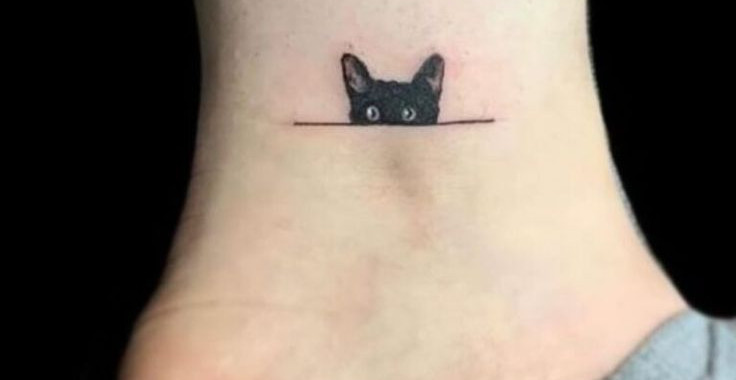





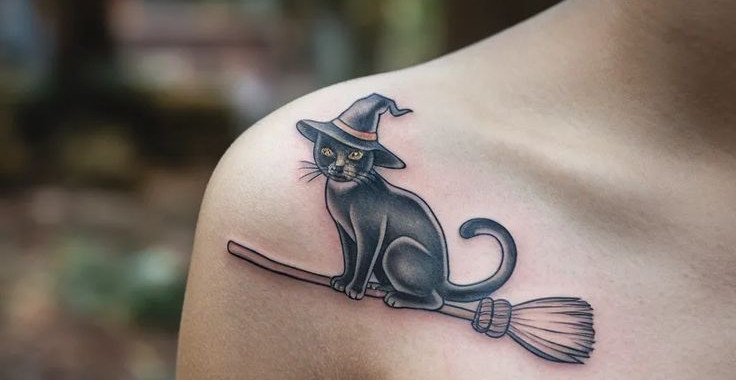





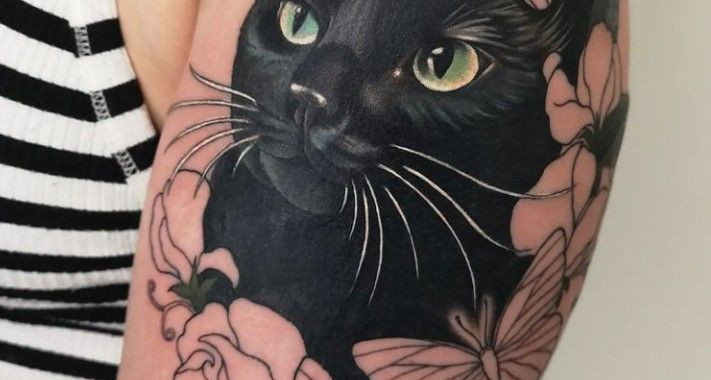




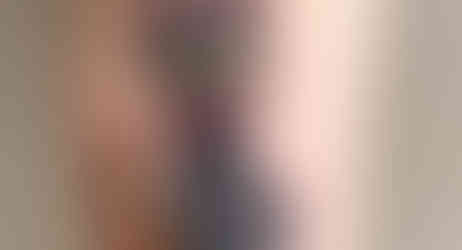





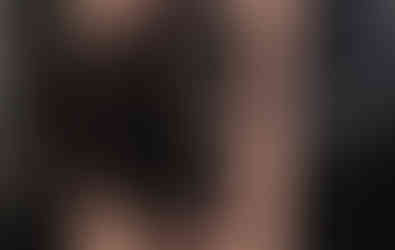


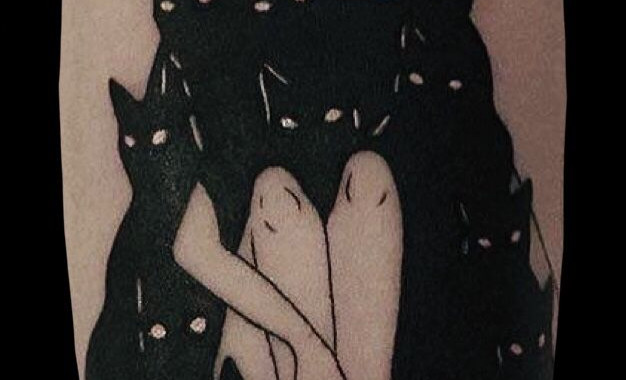



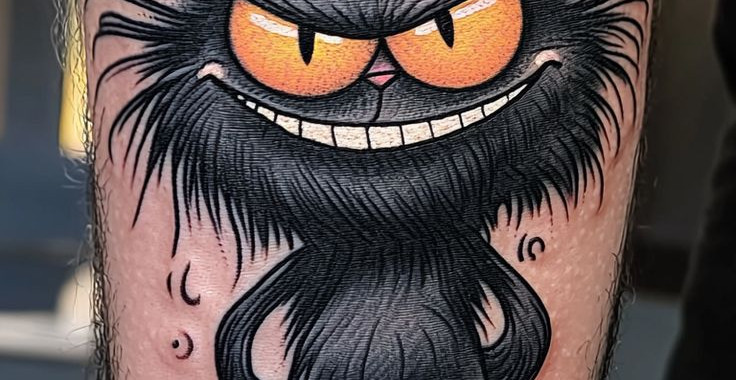

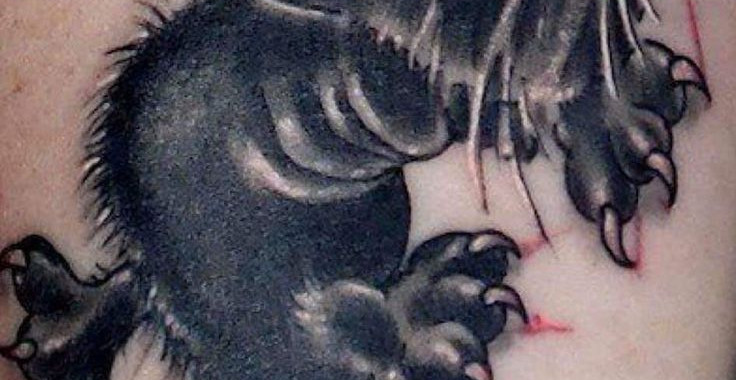















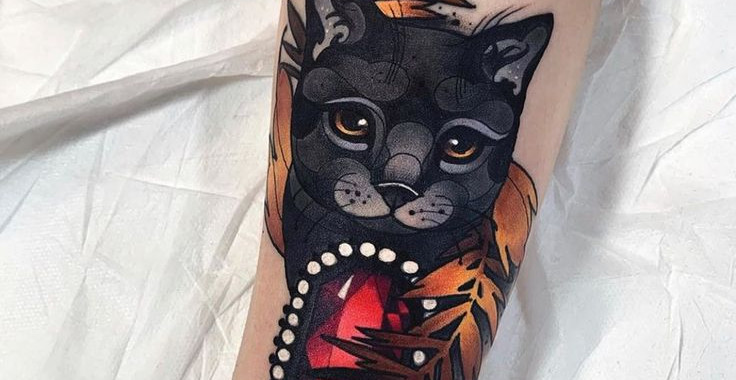
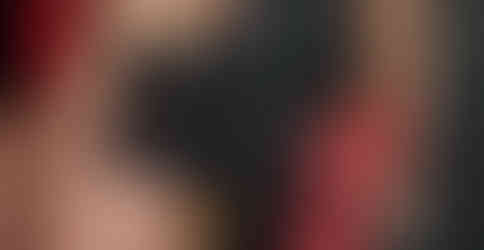




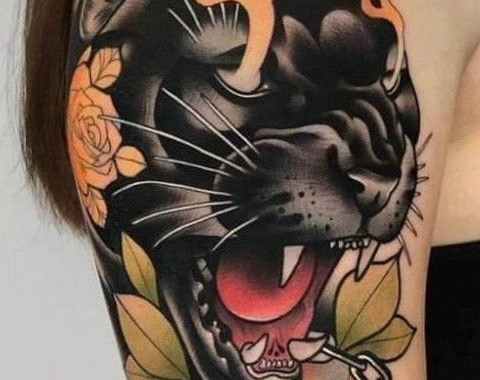










Comments